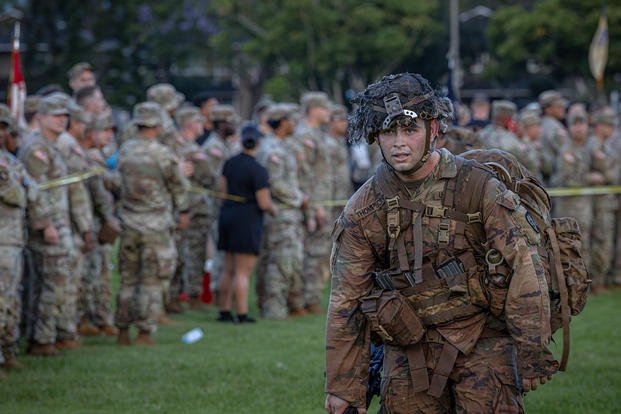Not everyone who aspires to serve in the military has a background in athletics. In fact, it’s a common misconception that you need to be an athlete to get into shape for service. The truth is, anyone can become fit to serve. It’s just about consistency with daily training and incorporating various fitness elements needed to become a “tactical athlete.”
Here’s a question from a young man who’s a beginner in terms of fitness and is eager to serve in the Army:
What would you recommend focusing on first for someone going into the Army Rangers (one day) and starting from scratch regarding running endurance and upper body strength? Should I focus more on running or lifting first? Thanks — Lane.
When it comes to preparing for the physical challenges of the military, my advice is to start by identifying your weaknesses while maintaining your strengths by taking the tests mentioned in the next paragraph. This self-assessment is crucial. You might find that you’re naturally inclined toward endurance or strength training, and you can see quick results by focusing on either. This is known as the beginner effect, where you can expect higher-than-average results in the first few months of a new fitness program. Try progressing through the following steps below:
1. Learn What the Army Requires for its Fitness Testing
Look at the push-ups, sit-ups and two-mile runs for the Army Physical Fitness Test, or APFT, that they may use to assess your abilities initially. Add pull-ups, too, as that exercise will help you move through obstacle courses, climbing ropes, jumping walls and more.
2. Build Up to the Official Army Fitness Test
The Army’s current grading test is the Army Combat Fitness Test (ACFT), which involves more than just calisthenics and running. It requires you to lift weights by using the hex-bar deadlift, throwing medicine balls, carrying kettlebells and dragging sleds for 50 meters, doing hand-release push-ups and the plank pose, and running two miles.
3. Become a Tactical Athlete
It’s important to note that non-athletes can become excellent tactical athletes. It’s about getting good at everything, rather than getting great at any individual fitness element. However, striving for and exceeding the standards on the ACFT will help you develop many potentially undeveloped fitness components, such as strength, power, speed, agility, durability, core stability, muscle stamina and cardio endurance. Remember, this journey is adaptable to your unique strengths and weaknesses.
4. Wear a Backpack and Start Walking
The other element not tested in this fitness test is load-bearing, using a backpack. Building up to carrying weight in a backpack for long distances will be a staple of any Army basic training. It will advance to higher levels when preparing for Army Ranger training. Start with 10-15 pounds in a backpack for the first five walks of 2-3 miles over a two- to three-week period, then add 10 pounds every 2-3 weeks until you can handle 50 pounds in the backpack. Then add 1-2 miles per week. It is only necessary to ruck twice a week. Rucking is a great way to top off a leg day, so make it your end-of-leg-day cardio activity.
Whether you are a natural-born athlete or never competed physically in anything, getting in shape to become a tactical athlete is something anyone can do. Athletes start this transition with weaknesses that they ignore while they focus on specializing in the elements of fitness required to perform well in their sport.
The journey is the same. Assess yourself and start focusing on building weaknesses so they are not a liability, then work to maintain your strengths when working on other physical elements in order to just get good at everything: strength, power, speed, agility, endurance, muscle stamina, flexibility, mobility, and grip.
Want to Learn More About Military Life?
Whether you’re thinking of joining the military, looking for fitness and basic training tips, or keeping up with military life and benefits, Military.com has you covered. Subscribe to Military.com to have military news, updates and resources delivered directly to your inbox.

